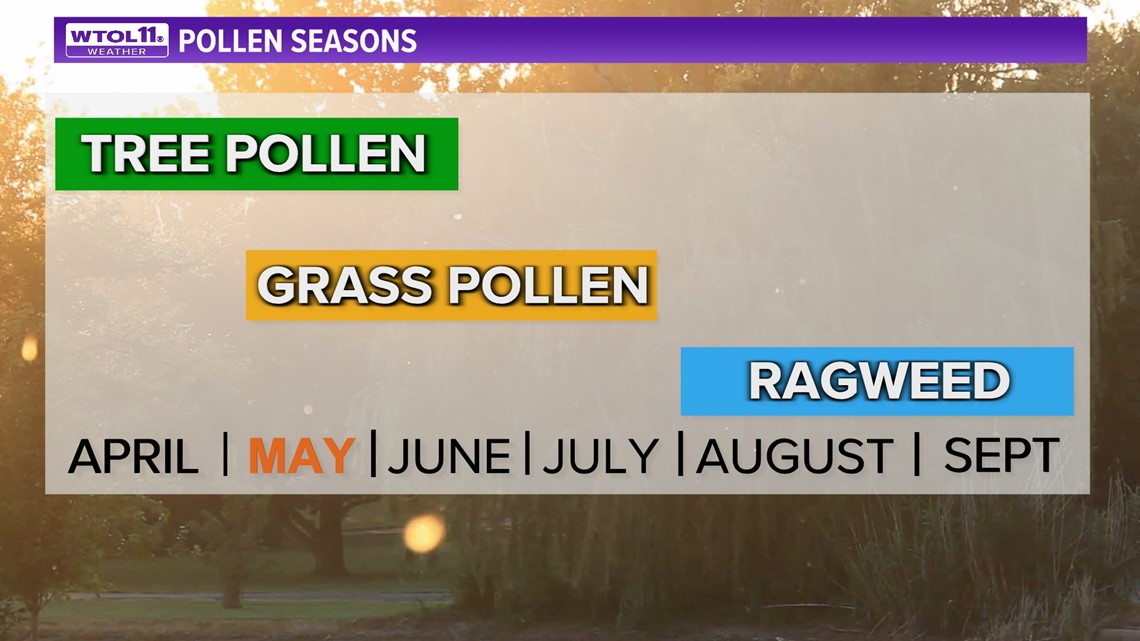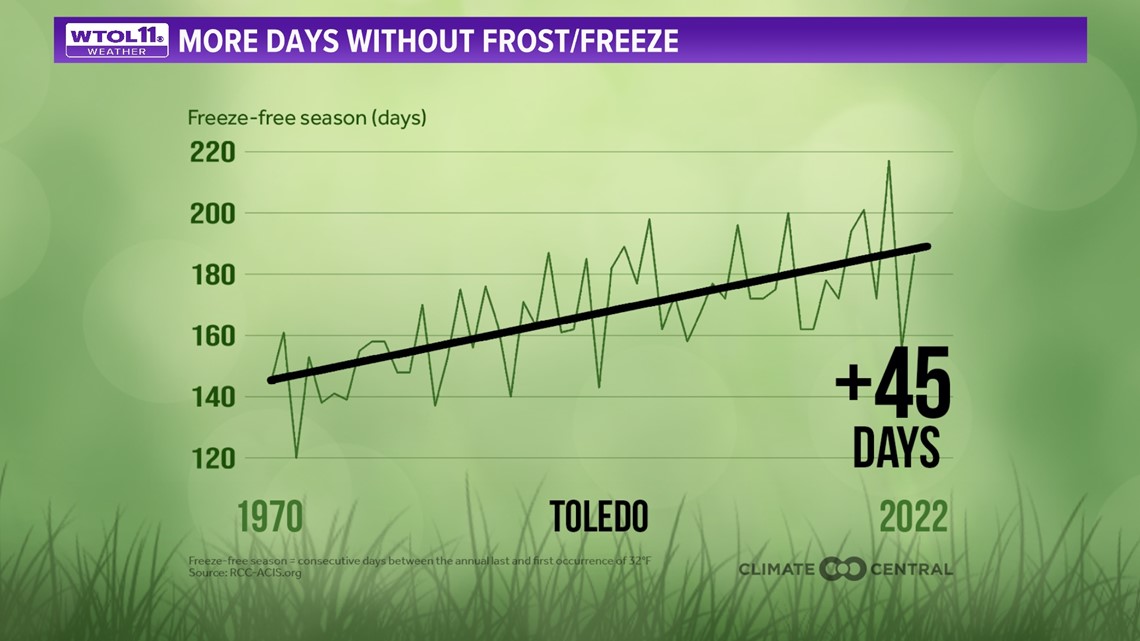TOLEDO, Ohio — Spring brings brighter weather and warmer temperatures, but also seasonal allergies.
Now that May is past the halfway point, seasonal allergies have ramped up, affecting many residents of northwest Ohio and southeast Michigan. Spring allergies strike every year, but have grown more intense in recent decades.
How is climate change impacting seasonal allergies? We'll explore that question in this week's edition of Climate Friday.
Seasonal allergies affect over 26% of Americans, and you may find yourself in that group that experiences a runny nose, itchy eyes, and frequent sneezing. In May, these symptoms are likely caused by tree pollen, the primary allergen circulating right now.


Tree pollen levels are expected to remain exceptionally high for the foreseeable future. Grass pollen is just getting started, and normally reaches its peak in mid-June during summertime.
The hot temperatures of July, our warmest month of the year, typically relieves symptoms temporarily as spring allergies take a brief hiatus. Ragweed brings the return of allergy symptoms in late summer and early autumn from August to September.
Though allergies spike every spring and summer, this year may be worse than usual. Allergy season started early this year, largely due to the mild winter and early spring. Warmer weather, caused in part by climate change, has lengthened the growing season, allowing allergens to proliferate for a longer portion of the year.
This trend has impacted much of the United States, and scientific research confirms the tangible impacts of climate change on spring allergies. One study examined 203 cities across the country, utilizing observations dating back to 1970.


The vast majority of cities experienced a noticeable increase in growing season, which expanded by 15 days on average. In Toledo, that number of days without a frost or a freeze grew by a whopping 45 days. That represents a month and a half window of extra time for allergies to strike, in part due to warmer temperatures associated with climate change.
Of the cities studied, the greatest increase in allergy season occurred in Reno, Nevada, which saw an incredible 99-day increase in growing season. As thermometers continue to rise, seasonal allergies will strike sooner and last longer.
The growing season will continue to expand in the future, lengthening the allergy season.
More recent research has documented the rapid escalation of allergy season. Since 1990, the growing season has increased by an average of 20 days across the country, representing an even bigger change than the data going back to 1970 showed.
In addition to a longer growing season, allergy season has become more severe. Because plants are developing leaves and blooming sooner, pollen levels have increased over time. Since 1990, pollen concentration has increased by 21%, representative of more allergens in the air.
Pollen concentration is typically measured by a Rotorod device, which captures pollen particles on a greased rod with an adhesive texture. Even though these pollen particles are not visible to the naked eye, microscopic analysis can detect pollen concentration in each sample.
The more pollen that's captured, the greater the density of pollen in the air and the worse your allergy symptoms may feel. Less pollen is a sign that allergy symptoms may be lighter than usual.
Overall, studies have shown that pollen levels are increasing in part due to climate change. This trend will likely continue in the future, and warmer temperatures will cause plants to bloom sooner and the growing season to last longer, aggravating allergies for much longer.
Climate change has profoundly impacted spring allergies and research shows an earlier onset and longer duration of allergy symptoms. As we enter the peak of spring allergies, those symptoms will unfortunately continue for the next few weeks if not longer.
Spring allergies could grow even worse in the future as climate change ramps up.
RELATED VIDEO

